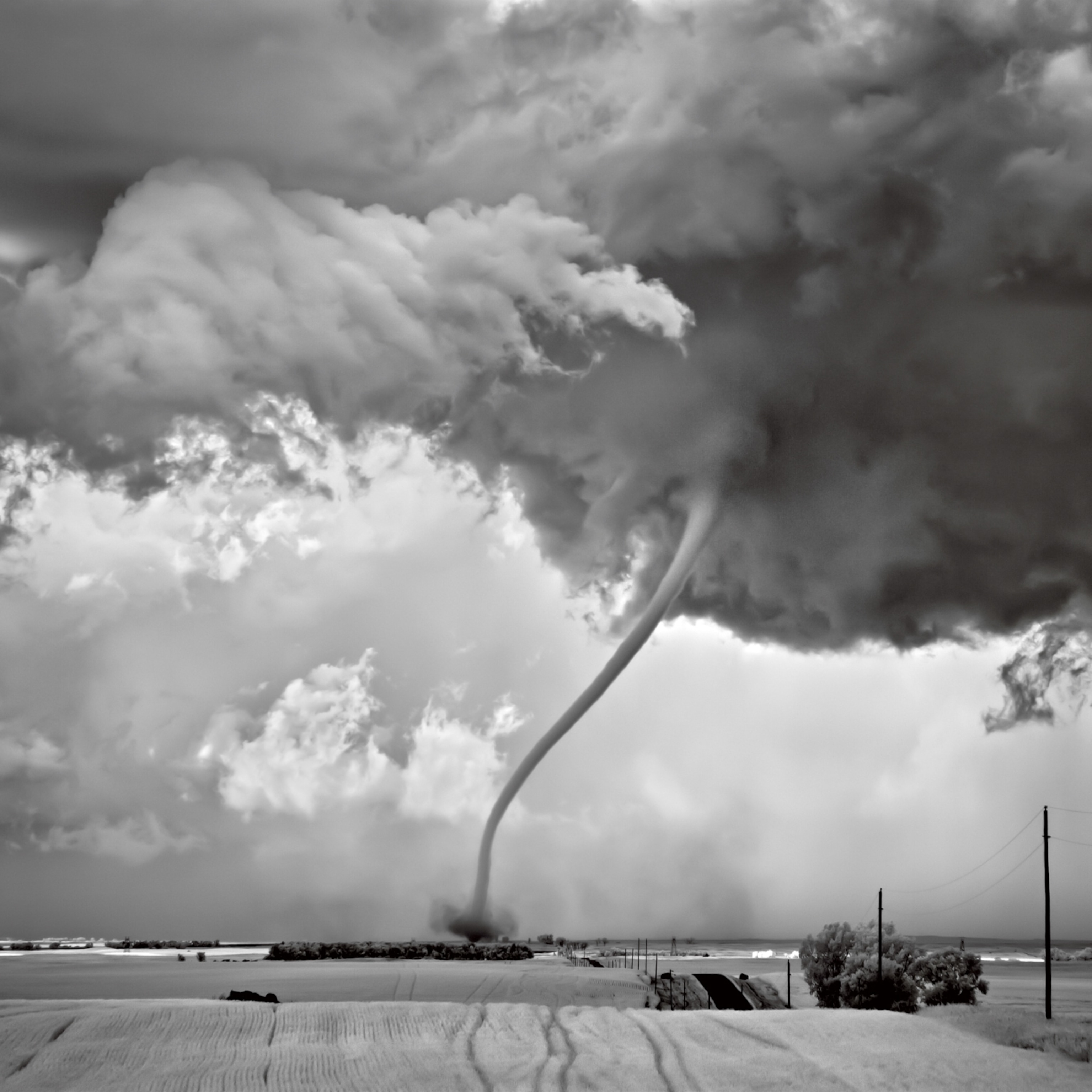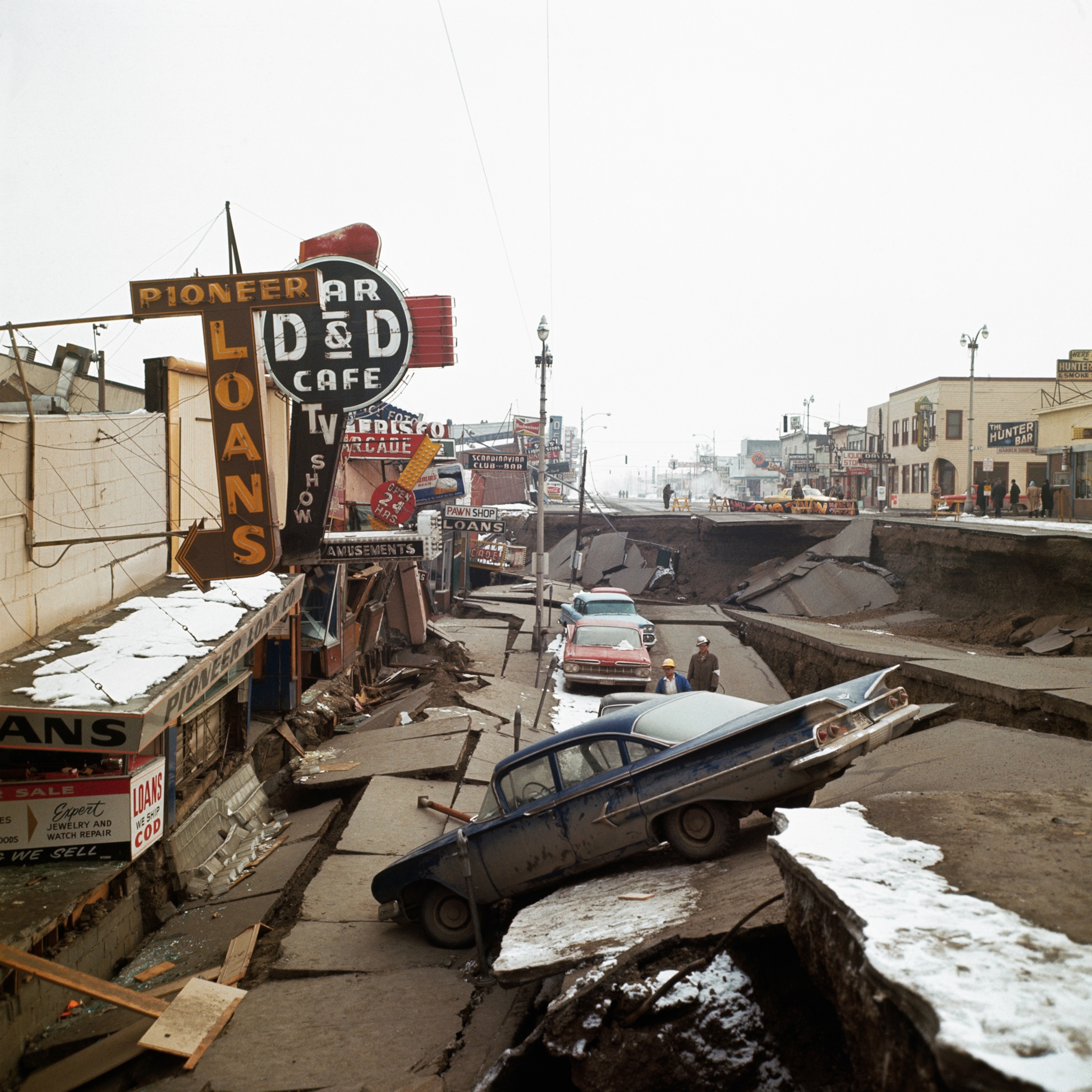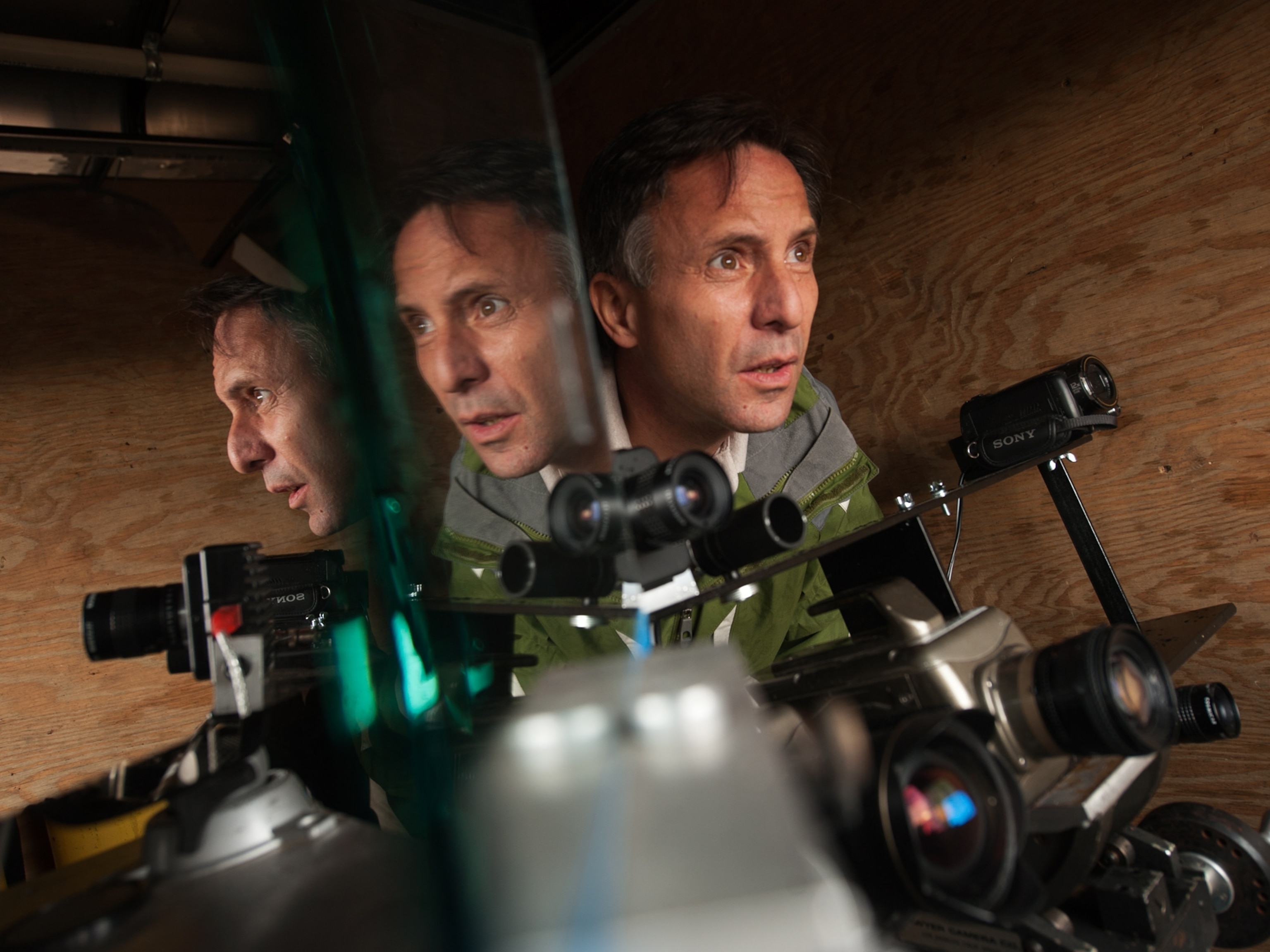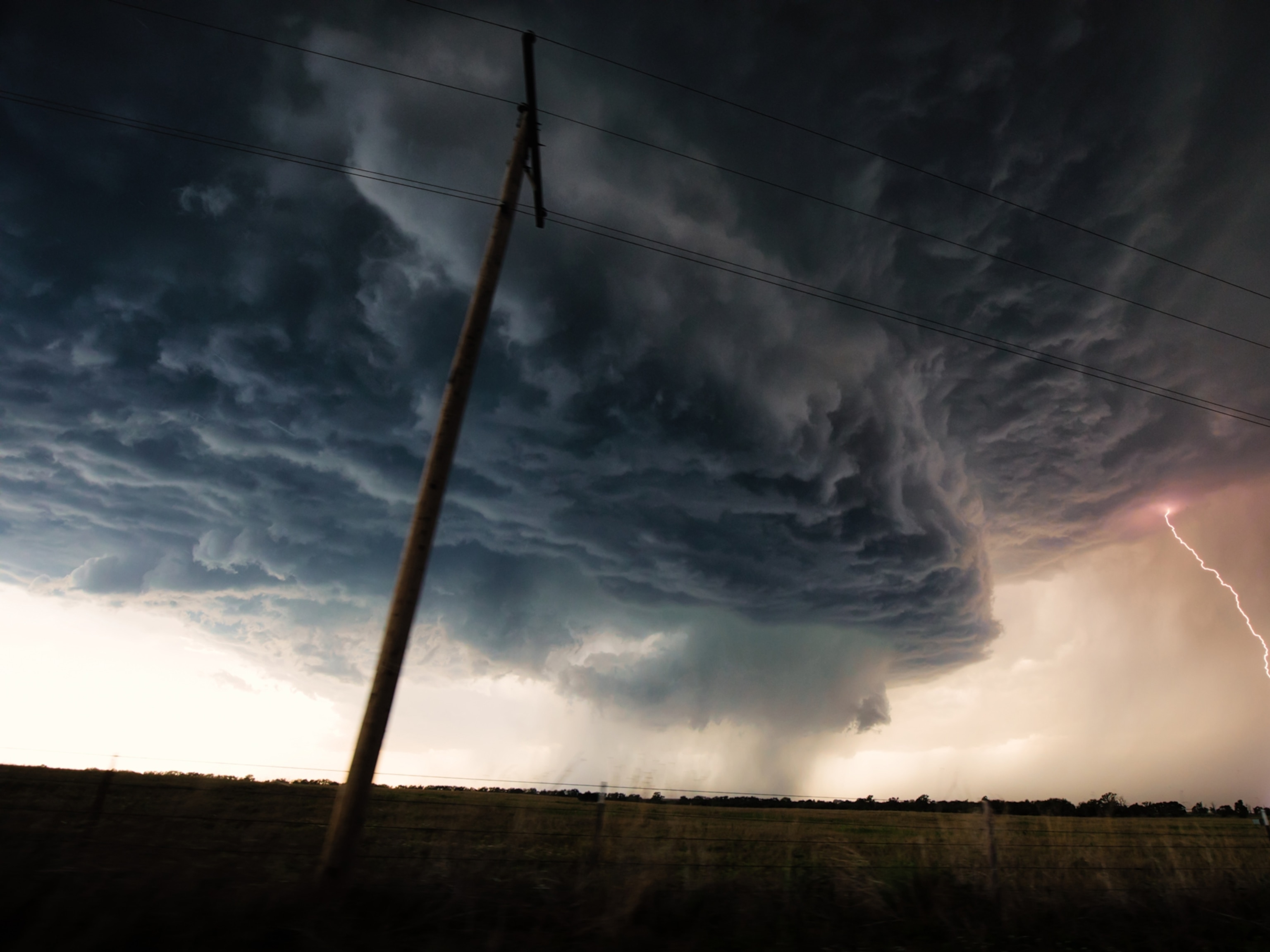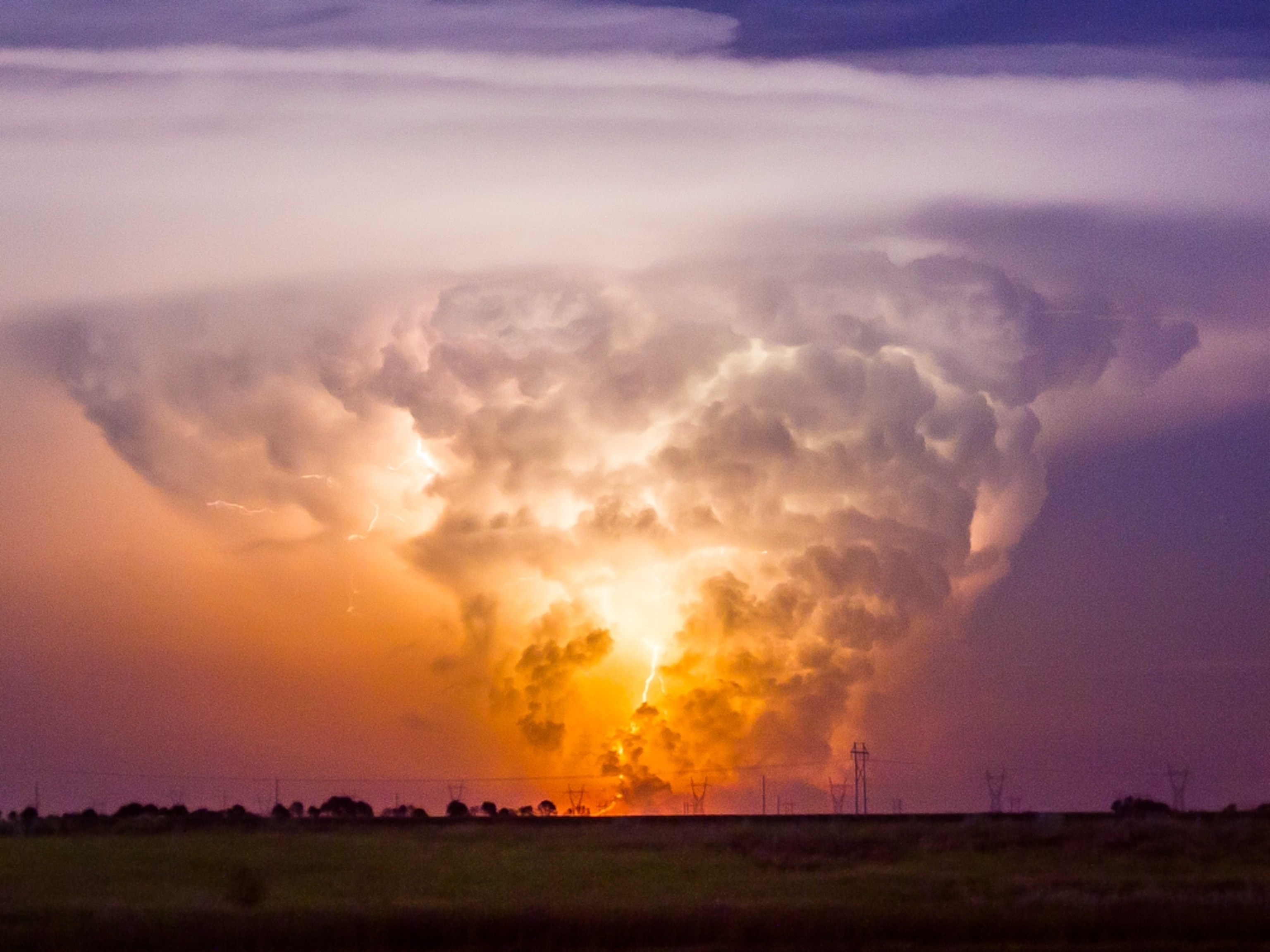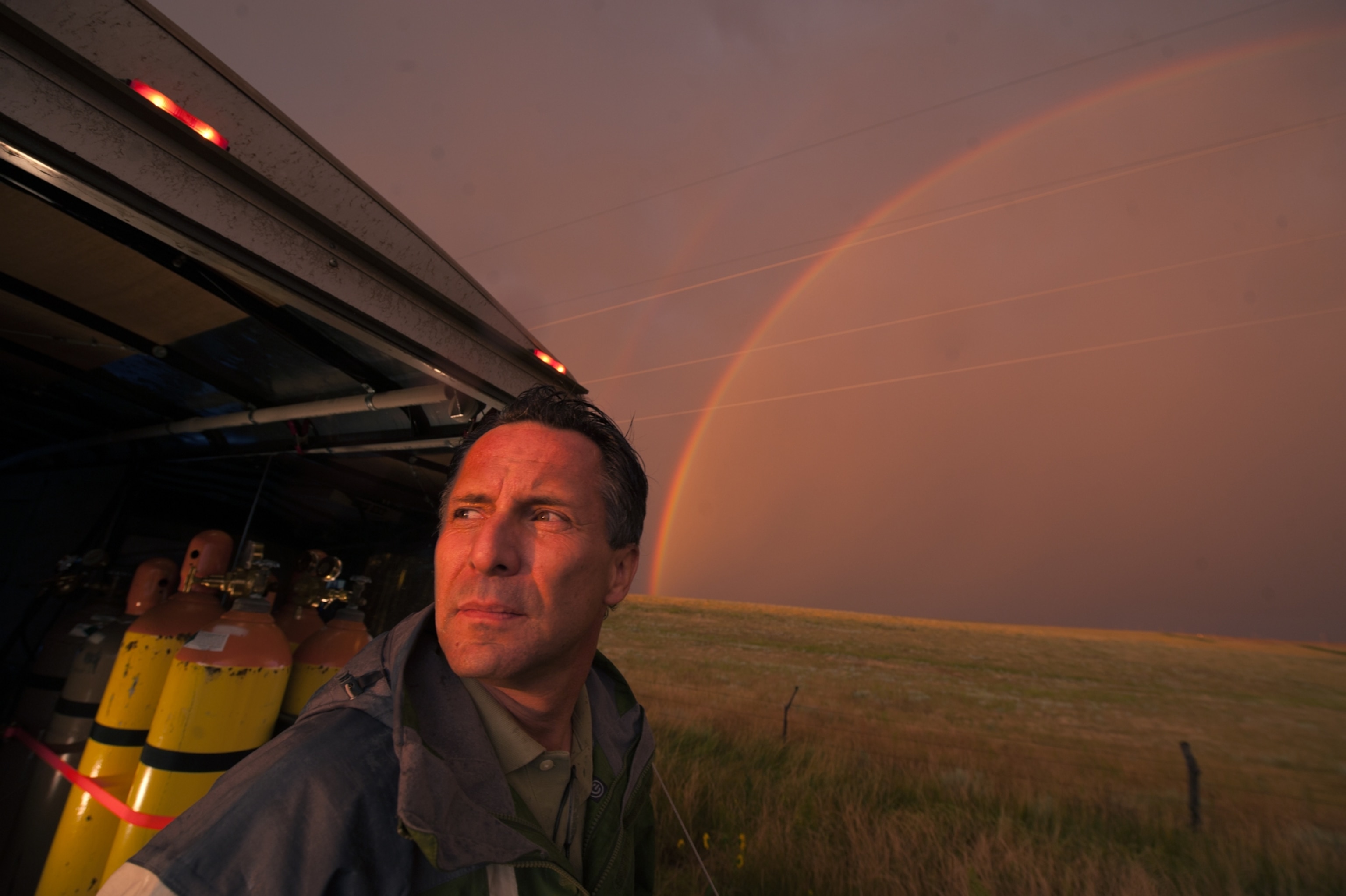
Tornado Chaser Tim Samaras Killed; Fans Pay Tribute
His son Paul was also killed in the El Reno, Oklahoma tornado.
Tim Samaras, one of the world's best-known storm chasers, died in Friday's El Reno, Oklahoma, tornado, along with his 24-year-old son, a gifted filmmaker, according to a statement from Samaras's brother.
"They all unfortunately passed away but doing what they LOVED," Jim Samaras, Tim's brother, wrote on Facebook, saying that storm chaser Carl Young was also killed. "I look at it that he is in the 'big tornado in the sky.'"
Tim Samaras, who was 55, spent the past 20 years zigzagging across the Plains, predicting where tornadoes would develop and placing probes he designed in a twister's path to measure data from inside the cyclone. (Read National Geographic's last interview with Tim Samaras.)
"Data from the probes helps us understand tornado dynamics and how they form," he told National Geographic. "With that piece of the puzzle we can make more precise forecasts and ultimately give people earlier warnings."
Samaras's instruments offered the first-ever look at the inside of a tornado by using six high-resolution video cameras that offered complete 360-degree views. He also captured lightning strikes using ultra-high-speed photography with a camera he designed to capture a million frames per second. (See stunning videos shot by Samaras.)
Samaras's interest in tornadoes began when he was six, after he saw the movie The Wizard of Oz. For the past 20 years, he spent May and June traveling through Tornado Alley, an area that has the highest frequency of tornadoes in the world. He worked with his son Paul, who was known for capturing cyclones on camera.
The Samaras team used probes that Tim designed to measure the pressure drops within the tornadoes themselves. But the work could be frustrating. Tornadoes developed from only two out of every ten storms the team tracked, and the probes were useful in only some of those tornadoes.
When the probes did work, they provided information to help researchers analyze how and when tornadoes form.
"This information is especially crucial, because it provides data about the lowest ten meters of a tornado, where houses, vehicles, and people are," Samaras once said.
In 2003, Samaras followed an F4 tornado that dropped from the sky on a sleepy road near Manchester, South Dakota. He deployed three probes in the tornado's path, placing the last one from his car a hundred yards ahead of the tornado itself.
"That's the closest I've been to a violent tornado, and I have no desire to ever be that close again," he said of that episode. "The rumble rattled the whole countryside, like a waterfall powered by a jet engine. Debris was flying overhead, telephone poles were snapped and flung 300 yards through the air, roads ripped from the ground, and the town of Manchester literally sucked into the clouds.
"When I downloaded the probe's data into my computer, it was astounding to see a barometric pressure drop of a hundred millibars at the tornado's center," he said, calling it the most memorable experience of his career. "That's the biggest drop ever recorded—like stepping into an elevator and hurtling up a thousand feet in ten seconds."
Samaras received 18 grants for fieldwork from the National Geographic Society over the years.
"Tim was a courageous and brilliant scientist who fearlessly pursued tornadoes and lightning in the field in an effort to better understand these phenomena," said Society Executive Vice President Terry Garcia in a statement on Sunday. "Though we sometimes take it for granted, Tim's death is a stark reminder of the risks encountered regularly by the men and women who work for us."
Samaras is survived by his wife Kathy and two daughters. The Samaras family released a statement on Sunday asking for thoughts and prayers for both Tim and Paul:
"We would like to express our deep appreciation and thanks for the outpouring of support to our family at this very difficult time. We would like everyone to know what an amazing husband, father, and grandfather he was to us. Tim had a passion for science and research of tornadoes. He loved being out in the field taking measurements and viewing mother nature. His priority was to warn people of these storms and save lives. Paul was a wonderful son and brother who loved being out with his Dad. He had a true gift for photography and a love of storms like his Dad. They made a special team. They will be deeply missed. We take comfort in knowing they died together doing what they loved. Please keep us in your thoughts and prayers."
—Kathy Samaras, Amy Gregg, Jennifer Scott
Jim Samaras told 7NEWS in Denver, Colorado, that his brother Tim was "considered one of the safest storm chasers in the business.
"He knew he wasn't going to put him[self], his son, or anyone else that was with him in the line of danger," said Jim Samaras. "He enjoyed it, it's true." Jim went on to praise the technology Tim developed "to help us have much more of an early warning." His brother's passion was "the saving of lives," Jim Samaras reflected, "and I honestly believe he saved lives, because of the tools he deployed and developed for storm chasing."
Other remembrances:
Severe storms photojournalist Doug Kiseling told CNN: "This thing is really shaking up everyone in the chasing community. We knew this day would happen someday, but nobody would imagine that it would happen to Tim. Tim was one of the safest people to go out there."
Discovery Channel: "We are deeply saddened by the loss of Tim Samaras, his son Paul, and their colleague Carl Young who died Friday, May 31st doing what they love: chasing storms." (Discovery Channel)
7NEWS chief meteorologist Mike Nelson: "Tim was not only a brilliant scientist and engineer, he was a wonderful, kind human being. If anyone could be called the 'gentleman of storm chasing,' it would be Tim. He was iconic among chasers and yet was a very humble and sincere man." (Facebook)

